Telugu Language

 Introduction
IntroductionTelugu is a one of the four Dravidian languages of South India. It is a luxuriously and ornately developed language. It is the official language of Andhra Pradesh, one of the largest states of India and the centrally administered Yanam district of the Union territory of Puducherry. It is the mother tongue of the majority of people of Andhra Pradesh, and is spoken by a sizable number of people in neighbouring states like Chattisgarh, Karnataka, Maharashtra, Orissa and Tamil Nadu.
According to the 2001 census, Telugu has the third largest number of native speakers in India and stands in the 15th position of the list of most-spoken languages worldwide. It is considered as an old language, with origins dating to as early as the 1st century A.D. It is known as the "Italian of the East" since every word in Italian and Telugu will end with a vowel, which adds to the sweetness and the quality of the language. It is also one of the twenty-two scheduled languages of the Republic of India.
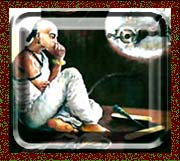 Early inscriptions of Telugu language date back from approximately the 6th century, but
a proper and strict literary creations starts at least five centuries later. The script, almost
similar to that of Kannada, took form in 1000 A.D. from the Pahlava script of 7 A.D.
Telugu literature contains various assorted forms of writing in all genre of verse, novel
or play. They are popularly known as Prabandham, Kavyam containing within itself the
Padya kavyam, Gadya kavyam and Kanda Kavyam (short poems), Kavitha, natakam
(Anthology), Avadhanam, Navala, Katha and Natakam.
Early inscriptions of Telugu language date back from approximately the 6th century, but
a proper and strict literary creations starts at least five centuries later. The script, almost
similar to that of Kannada, took form in 1000 A.D. from the Pahlava script of 7 A.D.
Telugu literature contains various assorted forms of writing in all genre of verse, novel
or play. They are popularly known as Prabandham, Kavyam containing within itself the
Padya kavyam, Gadya kavyam and Kanda Kavyam (short poems), Kavitha, natakam
(Anthology), Avadhanam, Navala, Katha and Natakam.
 Literature
Literature Dialects of Telugu are Berad, Dasari, Dommara, Golari, Kamathi, Komtao, Konda- Reddi, Salewari, Telangana, Warangal, Mahaboob Nagar (Palamuru), Gadwal (Rayalaseema mix), Narayana peta (Kannada and Marathi influence), Vijayawada, Vadaga, Srikakula, Visakhapatnam, Toorpu (East) Godavari, Paschima (West) Godavari, Kandula, Rayalaseema, Nellooru, Prakasam, Guntooru, Tirupati, Vadari and Yanadi (Yenadi). Standard Telugu is often called as pure Telugu.
 Vocabulary
Vocabulary 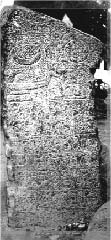 Telugu has a high percentage of Sanskrit words. The vocabulary of Telugu, especially in
Telangana region, has a trove of Persian-Arabic borrowings with suitable modifications
to fit Telugu phonology. This was due to centuries of Muslim rule in these regions, such
as the erstwhile kingdoms of Golkonda and Hyderabad. Modern Telugu vocabulary can
be said to constitute a diglossia, because the formal, standardized version of the language,
heavily influenced by Sanskrit, is taught in schools and used by the Government and
Hindu religious institutions.
Telugu has a high percentage of Sanskrit words. The vocabulary of Telugu, especially in
Telangana region, has a trove of Persian-Arabic borrowings with suitable modifications
to fit Telugu phonology. This was due to centuries of Muslim rule in these regions, such
as the erstwhile kingdoms of Golkonda and Hyderabad. Modern Telugu vocabulary can
be said to constitute a diglossia, because the formal, standardized version of the language,
heavily influenced by Sanskrit, is taught in schools and used by the Government and
Hindu religious institutions. Everyday Telugu varies with region and social status. Popular Telugu, especially in urban Hyderabad, spoken by the masses and seen in movies includes both English and Hindi/Urdu influences. According to famous linguist Chenchiah, Telugu is Vikriti, that is a language formed by modification of Sanskrit and Prakrit. It would appear that Andhras adopted a form of Prakrit, which, in course of development, became the immediate ancestor of Telugu.
 Literature
Literature During the period of ancient Telugu literature (from 500-1100 A.D), it existed only in the form of inscriptions. It was limited to the poetic works and prospered in the courts of kings and among scholars. Some of the Telugu poets translated poems and dramas from Sanskrit. However, narrative original poems were also written. Nannaya's Mahabharatam (1030 AD), an adaptation of the renowned Sanskrit epic Mahabharata, marks the beginning of Telugu literature and is known for its simplicity and high literary exellence. Andhra Sabda Chintamani, a grammatical work of Nannaya adds one more feather to his cap. This period also witnessed the translation of Ganitasara, a mathematical treatise of Mahivaracharya, into Telugu by Pavuluri Mallana.
The 12th and the 13th centuries A.D. began to witness the gradual rise of the Lingayata school of thought or Virasaivism, which circularised bhakti towards Shiva as the only resource of achieving salvation. The reflection of Virasaivism very much had impacted upon Telugu literature. Nannecodu, the first of the Saiva poets in Telugu, had penned the memorable kavya Kumara-sambhavamu in campu style. Palakuriki Somanatha (c.1200- 1240) was considered the trailblazer in devising new literary genres in Telugu like gadya, ragada, sataka and udaharana.
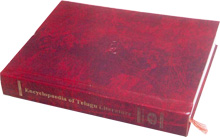 Prabandha (a story in verse having a tight metrical scheme), the popular Telugu literary
form in Telugu classical compositions perhaps had its beginning with Nanne Codadeva
in the 12th century. Many great poets like Srinatha and Errapraggada have adopted
and modified it. Srinatha's Sringara Naishadham is particularly well admired, falling
within the Prabandha form of writing in Telugu literature. Many significant Prabandhas
continued to be composed till as late as 18th century.
Prabandha (a story in verse having a tight metrical scheme), the popular Telugu literary
form in Telugu classical compositions perhaps had its beginning with Nanne Codadeva
in the 12th century. Many great poets like Srinatha and Errapraggada have adopted
and modified it. Srinatha's Sringara Naishadham is particularly well admired, falling
within the Prabandha form of writing in Telugu literature. Many significant Prabandhas
continued to be composed till as late as 18th century.A famous example of later day Prabandha is the Vijayavilasam by Cemakura Venkatakavi. Although Prabandhas were created over several centuries by many eminent writers, the ashtadiggajalu (the collective title given to the eight Telugu poets in the court of the emperor Sri Krishnadevaraya who ruled the Vijayanagara empire from 1509 until his death in 1529) were together responsible for the era named as Prabandha Yugam. It would include emperor Sri Krishna Devaraya himself. His Amuktamalayada, considered a mahakavya, is an exceptional illustration of Prabandha style in Telugu literature.
Great legendary religious poets like Potana (1450-1510), Jakkana (second half of the 14th century) and Gaurana (first half of the 15th century) are some others worth mentioning. Peddana`s Manucharitra is another outstanding instance of a Mahakavya. Allasani Peddana, who was regarded the `Andhra Kavita Pitamaha`, had authored Swaarochisha Manu Sambhavam (also known as Manu Charitra), another outstanding Telugu mahakavya delivered in the Prabandha style. The Vijayanagara period (1336-1565 A.D.) is at times considered as the golden age of Telugu literature. Tapati-samvaranamu (1565 A.D.) by Addanki Gangadhara Kavi; Yayaticharitramu (1578 A.D.) by Ponnikanti Telaganarya; Nirankusopakhyanamu by Kandukuru Rudra Kavi, Satcakravaticharitramu by Malla Reddy; Vaijayanti-vilasamu by Sarungu Timmanna, and Raghava-Yadava-Pandaviyamu by Balasarasvati were some of the renowned Telugu literary works emerged during the Qutub Shahi dynasty of Golkonda (1518-1687 A.D).
Telugu literature also had prospered in the south in the Samsthanas like Madurai, Thanjavur, etc under the patronage of the Nayaka kings. This period is known as 'Southern Period'. King Raghunatha Nayaka (1600-1631 A.D.) from this era, had authored Achyutabhyudayamu, Nalcharitramu and Valmikicharitramu. Kandukuri Rudra Kavi wrote Sugrivavijayamu in 1568 A.D. which is considered as the first Yakshagana in Telugu literature. King Vijaraghava Nayaka (1633-1673 A.D.) was an intellectually productive writer and had penned more than twenty Yakshaganas.
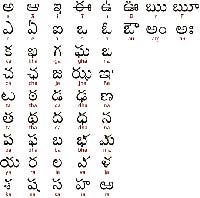 The first prose in Telugu also had made an appearance under the benefaction and aid
of the Nayaka kings of Madurai. Sthanapati had authored Rayavacakamu, a prose
biography dedicated to king Krishnadevaraya. Kameshwara Kavi`s Dhenumahatmyamu
and Satyabhama-santvanamu, Venkata Krishnappa`s Sarangadharacharitramu,
Radhikasnatvanamu and Ahalya-samkrandanamu and Venkatacalapati`s
Mitravindaparinayamu are some of the other great prose works in Telugu literature of this
period.
The first prose in Telugu also had made an appearance under the benefaction and aid
of the Nayaka kings of Madurai. Sthanapati had authored Rayavacakamu, a prose
biography dedicated to king Krishnadevaraya. Kameshwara Kavi`s Dhenumahatmyamu
and Satyabhama-santvanamu, Venkata Krishnappa`s Sarangadharacharitramu,
Radhikasnatvanamu and Ahalya-samkrandanamu and Venkatacalapati`s
Mitravindaparinayamu are some of the other great prose works in Telugu literature of this
period.
The conquest of the Deccan in 1687 A.D by the Mughals put a spoke in the wheels of Telugu literature particularly during the period 1750-1850. Nevertheless, Kucimanci Timma Kavi, Adidamu Sura Kavi, Kucimanci Jagga Kavi, Kankanti Paparaju, Sishtu Krishnamurti, Pindiprolu Lakshmana Kavi, Madina Subhadramma and Tarigonda Venkamamba are the few poets who triumphed during this period. Subsequent to a prolonged period of Renaissance, Telugu literature then stayed witness to a period of transition from 1850 to 1910.
The first Telugu book was printed in 1796. During the 1890's Telugu literature was under the influence of the progressive movement, free verse movement and Digambara mode. Narahari Gopala Krishnamma Chetti was the one who had authored the first novel in Telugu named Rangarajacharita in 1872. Drama had made its presence felt in Telugu literature during the later part of the 19th century. Narakasura-vijaya-vyayogam (1872) by Kokkonda Venkataratnam and Abhijnana-Sakuntalam (1883) by Virasalingam are the earliest illustrations of celebrated Telugu adaptations of Sanskrit plays. Virasalingam also had gone ahead to translate Shakespeare`s The Merchant of Venice and The Comedy of Errors in Telugu.
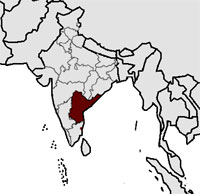 During the 1920's and 1930's, a new type of romantic poetry called the Bhavakavithwa
(poetry of imagination) was introduced based on the styles of foreign romantic poets
like Shelly, Keats and Wordsworth. R. Subba Rao`s Trinakankanam (1913), D.Krishna
Sastri`s Krishnapaksam (1924), D. Rami Reddy`s Palitakesam and Adivi Bapiraju`s
Sasikala are excellent instances of this genre of poetry in Telugu literature. Bengali
novelists like Rabindranath Tagore, Bankim Chandra Chattopadhay and Ramesh Chandra
Dutta had a great influence on modern Telugu fiction.
During the 1920's and 1930's, a new type of romantic poetry called the Bhavakavithwa
(poetry of imagination) was introduced based on the styles of foreign romantic poets
like Shelly, Keats and Wordsworth. R. Subba Rao`s Trinakankanam (1913), D.Krishna
Sastri`s Krishnapaksam (1924), D. Rami Reddy`s Palitakesam and Adivi Bapiraju`s
Sasikala are excellent instances of this genre of poetry in Telugu literature. Bengali
novelists like Rabindranath Tagore, Bankim Chandra Chattopadhay and Ramesh Chandra
Dutta had a great influence on modern Telugu fiction. 

